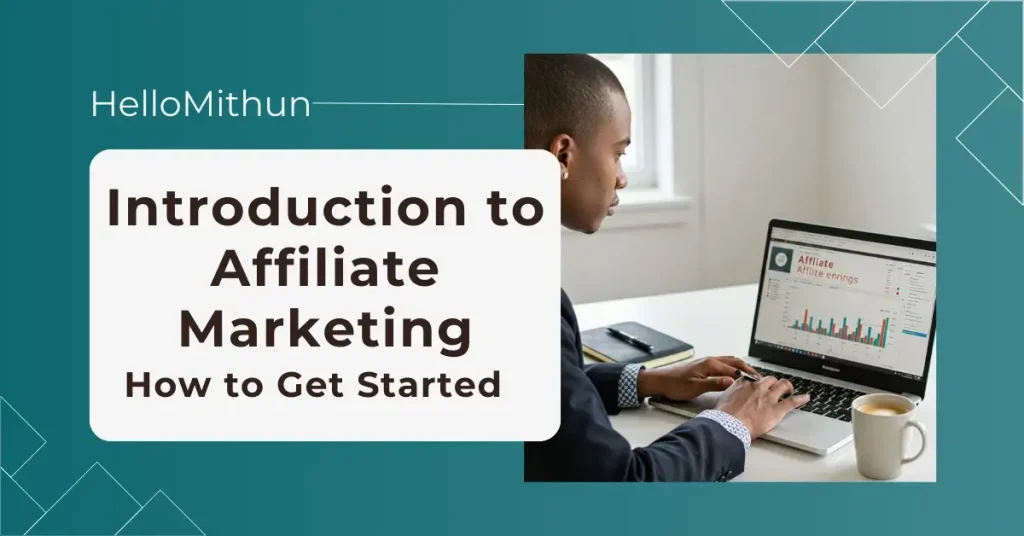Introduction
Ever wondered how some people make money online without creating their own products? That’s where affiliate marketing comes in. It’s one of the easiest ways to earn passive income by promoting products or services you believe in.
Whether you’re a blogger, YouTuber, or social media influencer, affiliate marketing can help you generate income while providing value to your audience.
In this guide, we’ll break down everything you need to know to get started with affiliate marketing.
From choosing the right niche to driving traffic and making commissions, we’ve got you covered.
What Is Affiliate Marketing?
Affiliate marketing is a business model where you earn a commission for promoting someone else’s product or service. The process is simple:
- You join an affiliate program.
- The company gives you a unique tracking link.
- You promote the product using that link.
- When someone purchases through your unique link, you receive a commission.
For instance, imagine you run a fitness blog. You can sign up for an affiliate program like Amazon Associates and recommend workout gear. If a user clicks your link and completes a purchase, you earn a portion of the sale.
Affiliate marketing involves three key players:
- Merchant (Advertiser/Brand): The company that sells the product.
- Affiliate (Publisher/Marketer): The person who promotes the product.
- Consumer (Customer): The person who buys through the affiliate link.
How Does Affiliate Marketing Work?
The entire process revolves around tracking links. These links contain a unique ID that allows the merchant to track where the sale came from. Here’s how it works:
- Find an affiliate program related to your niche.
- Sign up and get a special tracking link.
- Promote the product via blog posts, videos, social media, or email marketing.
- When someone clicks the link and buys, you earn a commission.
Different programs offer different commission structures. Some pay a percentage of sales, while others offer flat fees per referral.
Benefits of Affiliate Marketing
Affiliate marketing is popular for good reasons:
- Low Startup Cost: You don’t need to create a product or maintain inventory.
- Passive Income Potential: Once your content ranks or goes viral, it can generate sales on autopilot.
- No Customer Service Hassles: The brand handles fulfillment, customer support, and returns.
- Work from Anywhere: Work from any location with just a laptop and an internet connection.
If you’re looking for a flexible online income source, affiliate marketing is worth considering.
How to Get Started with Affiliate Marketing
Step 1: Choose a Niche
The first step is selecting a niche you’re passionate about. A good niche should be:
- Profitable (high demand and monetization potential)
- Evergreen (consistent interest over time)
- Something you enjoy (so you stay motivated)
Popular niches include:
- Technology (gadgets, software, web hosting)
- Health & Fitness (supplements, workout plans, wellness products)
- Personal Finance (investing, budgeting, credit cards)
- Lifestyle (fashion, travel, home decor)
Step 2: Find Affiliate Programs
Once you pick a niche, look for affiliate programs that align with your content. Here are some platforms to explore:
- Amazon Associates – Great for beginners, wide range of products (Amazon Affiliate Program)
- ShareASale – Marketplace for thousands of brands (ShareASale)
- CJ Affiliate – Connects with major retailers (CJ Affiliate)
- ClickBank – Specializes in digital products (ClickBank)
Step 3: Build a Platform
You need a platform to promote affiliate products. Some options include:
- Blogging – Write SEO-optimized content that ranks on Google.
- YouTube – Create product reviews and tutorials.
- Social Media – Share recommendations on Instagram, TikTok, or Twitter.
- Email Marketing – Build an audience and send targeted offers.
If you’re serious about affiliate marketing, consider starting a website with WordPress and using an SEO plugin like Rank Math or Yoast SEO.
Step 4: Create Valuable Content
People won’t buy just because you drop an affiliate link. You need engaging and informative content. Here are some effective content types:
- Product Reviews – Detailed analysis of products.
- Comparison Articles – “Best Laptops for Students: MacBook vs. Dell.”
- Tutorials & How-To Guides – “How to Set Up a WordPress Website.”
- Listicles – “10 Best Affiliate Marketing Programs for Beginners.”
Step 5: Drive Traffic to Your Affiliate Links
Traffic is key to making commissions. Here are some ways to get it:
- SEO (Search Engine Optimization): Optimize content for Google ranking.
- Social Media Marketing: Promote on platforms like Pinterest, Instagram, and Twitter.
- Email Marketing: Grow an email list and engage with potential customers.
- Paid Advertising: Run Facebook Ads, Google Ads, or YouTube Ads.
Step 6: Track Performance and Optimize
Use analytics tools to track which links perform best:
- Google Analytics – Track website traffic.
- Bit.ly – Shorten and track affiliate links.
- Affiliate Dashboards – Check clicks, conversions, and commissions.
Over time, tweak your strategy based on what works best.
Common Mistakes to Avoid in Affiliate Marketing
- Promoting Too Many Products at Once – Focus on quality over quantity.
- Not Providing Value – Affiliate marketing isn’t just about making money; it’s about helping people make informed decisions.
- Ignoring SEO – Without SEO, your content won’t rank, limiting traffic and conversions.
- Violating Affiliate Program Rules – Always follow guidelines to avoid getting banned.
Conclusion
Affiliate marketing is a great way to build an online income stream, but success requires effort, patience, and strategy.
By choosing the right niche, joining reputable programs, and consistently producing valuable content, you can create a sustainable affiliate business.
If you’re ready to start your affiliate marketing journey, keep learning and experimenting. For more insights on digital marketing, check out HelloMithun, where we dive deeper into strategies that work.

